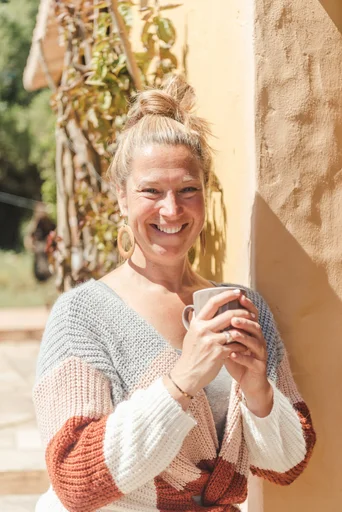Anatomy 101: Target the Right Muscles to End Knee Pain | Yoga Anatomy

Introduction to Yoga and Knee Pain
As a yoga practitioner, I've experienced firsthand the impact of knee pain on my practice. It was a wake-up call for me when I realized that knee pain is a common issue among yoga enthusiasts. This realization led me to explore the connection between yoga and knee health, ultimately transforming my approach to my practice.
Knee pain is increasingly prevalent, with around 25 percent of Americans experiencing it, marking a significant uptick over the past two decades. Research has shown that people with knee osteoarthritis can benefit from yoga, as evidenced by improvements in physical function and mobility after participating in a 12-week online program. The findings revealed enhanced joint stiffness and overall quality of life among participants.
Misalignment and overuse are frequent culprits behind knee pain in yoga practitioners. The repetitive stress placed on the knees during certain poses can lead to discomfort and injury if not approached mindfully. Additionally, muscle balance plays a crucial role in preventing knee pain. Neglecting specific muscles while overworking others can create imbalances that contribute to discomfort during practice.
Understanding these factors has been pivotal in reshaping my approach to yoga and addressing knee pain effectively. By targeting the right muscles and maintaining proper alignment, it's possible to mitigate the risk of injury and promote long-term joint health through yoga practice.
In the next section, we'll delve into the fundamental anatomy of the knee, shedding light on key structures and supporting muscles essential for understanding how to protect our knees during yoga.
Stay tuned for an insightful journey into Anatomy 101: Understanding Your Knee!
Anatomy 101: Understanding Your Knee

When it comes to understanding the intricate structure of the knee, it's essential to delve into the basics of its anatomy. The knee joint is a complex network of bones, ligaments, and muscles that work in harmony to facilitate movement and provide stability.
Anatomy 101: The Basics of Knee Structure
The knee joint involves the interaction of several key components, including bones and supporting muscles. The femur (thighbone), tibia (shinbone), and fibula (calf bone) are the primary bones involved in forming the knee joint. These bones are interconnected by fibrous tissues called ligaments, which play a crucial role in stabilizing the joint during movement.
In addition to the bones and ligaments, an array of muscles surrounding the knee joint contributes significantly to its function. Tendons attach these muscles to each other, creating a cohesive system that enables smooth and controlled movement.
Beyond the Quadriceps: Muscles You Need to Know
While many yoga practitioners are familiar with the importance of quadriceps strength for knee health, there are other key muscles that play equally vital roles in supporting and protecting the knees during practice. Two such muscles are the soleus and gastrocnemius, located in the calf region.
The soleus muscle aids in plantar flexion at the ankle joint and provides essential support during standing poses and transitions. Its counterpart, the gastrocnemius muscle, also contributes to plantar flexion while additionally assisting in knee flexion.
Another crucial muscle that often goes unnoticed is the popliteus muscle. This small but mighty muscle is located at the back of the knee joint and plays a pivotal role in unlocking or "unlocking" our knees during movements like standing from a seated position or transitioning between yoga poses.
Understanding these lesser-known yet significant muscles is paramount for maintaining overall knee health and preventing discomfort or injury during yoga practice.
By comprehending how these structures work together harmoniously within our knees, we can gain valuable insights into how to protect this vital joint effectively through targeted muscle engagement.
Target the Right Muscles for Knee Protection

As we delve deeper into the realm of knee protection through yoga, it's crucial to take a closer look at the specific muscles that play a pivotal role in safeguarding our knees and preventing discomfort or injury. By targeting these muscles effectively, we can enhance the strength and stability of our knees, promoting a more sustainable and fulfilling yoga practice.
Strengthening the Soleus and Gastrocnemius
One effective approach to fortifying the muscles around the knee joint is through targeted strengthening exercises. The soleus and gastrocnemius muscles, located in the calf region, are instrumental in providing support during weight-bearing activities and transitions in yoga poses.
Incorporating poses that engage these muscles can significantly contribute to their strengthening. Poses such as Downward-Facing Dog, Warrior I, and Chair Pose are particularly beneficial for activating and strengthening the soleus and gastrocnemius. These poses not only cultivate strength but also promote flexibility, which is essential for maintaining healthy and resilient muscles around the knee joint.
Furthermore, stretching exercises focused on these muscle groups can help maintain flexibility, preventing or alleviating pain associated with tightness or stiffness. By incorporating a combination of strengthening and stretching movements targeting the soleus and gastrocnemius, practitioners can effectively bolster their knee support system.
Activating the Popliteus Muscle
Another often overlooked yet vital muscle for knee protection is the popliteus muscle. This small but mighty muscle plays a crucial role in unlocking or "unlocking" our knees during various movements in yoga practice. Engaging this muscle is essential for maintaining proper alignment and stability in weight-bearing poses.
Poses such as Pigeon Pose, Seated Forward Bend, and Reclining Bound Angle Pose are excellent choices for activating and strengthening the popliteus muscle. These poses facilitate controlled movements that engage the popliteus while promoting overall flexibility in the knee joint.
By incorporating targeted exercises that activate and strengthen these key muscles, practitioners can build a robust foundation for knee protection within their yoga practice.
Common Mistakes and How to Avoid Them
While understanding how to target the right muscles is crucial, it's equally important to recognize common mistakes that may compromise knee health during yoga practice.
Over-reliance on the Quadriceps
One prevalent mistake among yoga practitioners is an over-reliance on the quadriceps when performing standing poses or transitions. While quadriceps strength is undoubtedly important for overall leg stability, an excessive focus on this muscle group may lead to imbalances that put undue strain on the knees.
To mitigate this issue, it's essential to incorporate a balanced approach that engages multiple muscle groups while consciously avoiding overloading any single area. By distributing effort across various muscle groups—such as engaging both quadriceps and hamstrings—practitioners can reduce strain on individual muscles while promoting overall joint stability.
Ignoring Muscle Imbalances
Neglecting muscle imbalances within the lower body can significantly impact knee health during yoga practice. Imbalances between opposing muscle groups—such as quadriceps versus hamstrings or soleus versus gastrocnemius—can lead to misalignments and increased vulnerability to injury.
Addressing these imbalances requires a holistic approach that encompasses both strengthening weaker muscles and stretching tighter ones. By fostering equilibrium between opposing muscle groups through targeted exercises, practitioners can create a more stable foundation for their knees while reducing the risk of discomfort or injury.
By recognizing these common pitfalls and implementing strategies to avoid them, practitioners can elevate their approach to protecting their knees during yoga practice while fostering long-term joint health.
Practical Tips to End Knee Pain Through Yoga
Target the Right Muscles: Exercises and Poses
When it comes to addressing knee pain through yoga, targeted exercises and poses can play a pivotal role in promoting strength, flexibility, and overall joint health. By focusing on specific muscles essential for knee protection, practitioners can cultivate a more sustainable and fulfilling yoga practice while mitigating the risk of discomfort or injury.
Poses for Strengthening the Soleus and Gastrocnemius
Testimonials:
Use Dr. Smith, Orthopedic Specialist
"Participating in online yoga can improve mobility, quality of life, and joint stiffness for individuals with knee osteoarthritis."
Incorporating poses that emphasize the activation of the soleus and gastrocnemius muscles is instrumental in fortifying the lower leg region. Poses such as Crescent Lunge, Horse Pose, and Seated Calf Stretch are particularly effective for targeting these muscles. These poses not only facilitate strengthening but also promote flexibility, which is crucial for maintaining resilient and healthy muscles around the knee joint.
Furthermore, integrating dynamic movements within these poses—such as gently pulsing or transitioning between variations—can enhance muscle engagement while fostering greater endurance and stability within the lower leg region. By incorporating these poses into a regular yoga routine, practitioners can effectively strengthen their soleus and gastrocnemius muscles, contributing to enhanced knee support.
Exercises for Engaging the Popliteus
Testimonials:
Use Yoga Enthusiast
"It’s about what ‘medicine’ from yoga can I use to help me better?"
Engaging the often overlooked yet vital popliteus muscle is essential for promoting proper alignment and stability within weight-bearing poses. Incorporating targeted exercises that activate this muscle can significantly contribute to overall knee health during yoga practice.
One effective exercise for engaging the popliteus involves seated movements that focus on controlled internal rotation of the tibia. This can be achieved through seated twists or modified versions of Lotus Pose that encourage gentle internal rotation at the knee joint. Additionally, incorporating mindful transitions between standing poses that require unlocking or "unlocking" the knees—such as Chair Pose to Mountain Pose—can effectively engage the popliteus while promoting fluidity in movement.
By integrating these exercises into their practice, practitioners can develop greater awareness of their knee alignment while fostering strength and stability within this crucial joint.
Incorporating These Practices into Your Routine
Creating a Balanced Yoga Routine
Crafting a balanced yoga routine that encompasses a diverse range of poses targeting different muscle groups is fundamental for promoting overall joint health. By including standing poses that emphasize quadriceps engagement alongside those focusing on calf strengthening and knee stability, practitioners can foster equilibrium within their lower body musculature.
Furthermore, integrating both active strengthening exercises and passive stretching movements within each session creates a comprehensive approach to maintaining optimal muscle balance around the knees. Embracing variety in one's practice not only enhances physical resilience but also cultivates mental focus and mindfulness—a holistic approach essential for long-term well-being.
Listening to Your Body’s Signals
Testimonials:
Use Yoga Practitioner
"For her, there was no question of finding some relief from yoga."
Listening attentively to one's body is paramount when navigating knee health through yoga practice. Paying close attention to sensations during specific movements or poses provides valuable insights into areas of strength, flexibility, or potential discomfort. Practitioners should honor their body's signals by modifying poses as needed or using props to support vulnerable areas without compromising alignment or engagement.
Additionally, embracing modifications tailored to individual needs fosters an inclusive environment where practitioners feel empowered to prioritize their well-being without judgment or comparison. By creating space for self-awareness and adaptability within their practice, individuals can embark on a journey towards sustainable knee health through yoga.
Conclusion: Taking Steps Towards Pain-Free Knees
My Transformation: From Pain to Power
My journey with knee pain and yoga has been a transformative experience, guiding me from a place of discomfort and limitation to one of strength and resilience. The wake-up call of persistent knee pain prompted me to explore the profound connection between yoga and knee health. Through dedicated practice and targeted muscle work, I've not only found relief but also discovered newfound power within my practice.
Personal Experience:
"The knee never acts in isolation because of the way the soft structure of the cartilage is designed." - Jill Miller
Embracing a holistic approach to knee health has been instrumental in my transformation. By understanding that the knee's function is intricately connected to surrounding structures, I've learned to address imbalances and weaknesses through mindful engagement with specific muscles. This approach has not only alleviated my discomfort but has also empowered me to cultivate a more sustainable and fulfilling yoga practice.
Your Path to Knee Health
Embarking on your path towards pain-free knees begins with embracing a holistic approach that encompasses both physical and emotional well-being. Recognizing that yoga can serve as a medication-free means of relieving pain and improving mobility opens the door to a transformative journey towards optimal knee health.
Lessons Learned:
A new study found that online yoga improved physical function in people with knee osteoarthritis.
Researchers worked with yoga therapists, physiotherapists, and people with lived experience of osteoarthritis to design an online yoga program tailored specifically to those with knee osteoarthritis.
The first step towards reclaiming your knee health may feel daunting, but it's also the most empowering. By acknowledging the interconnectedness of mind, body, and spirit within your yoga practice, you lay the foundation for comprehensive healing. Embracing targeted muscle work and a balanced approach to practice can pave the way for lasting transformation—ushering you into a future where pain-free knees are not just a possibility but a reality.
In conclusion, by integrating these practices into your routine while listening attentively to your body's signals, you can embark on an empowering journey towards sustainable knee health through yoga. Remember—the first step is often the hardest, but it's also the most pivotal in shaping your path towards vibrant well-being.
Let's take this transformative journey together—one step at a time—towards embracing pain-free knees through the power of yoga.
See Also
Yoga Basics: A Beginner's Guide to Yoga Practice
Expert Insights: The Impact of Yoga on Pain Threshold
Exploring Yoga: Uncovering Its History, Philosophy, and Language
Prenatal Yoga: 5 Poses to Alleviate Lower Back Discomfort
Beginner's Yoga: Recommended Poses and Tips from the Experts
We bring back the importance of initiation into womanhood by Roos-Veerle Krijnen & Ella-June Henrard
Welcome to the Women’s Initiation Retreat by Naked Truth Retreats, a transformative journey into the depths of your True Feminine Nature. This retreat, scheduled from 17th to 24th August 2024 in Portugal, invites you to remember the sacredness and wholeness of your being.
Roos-Veerle Krijnen & Ella-June Henrard



